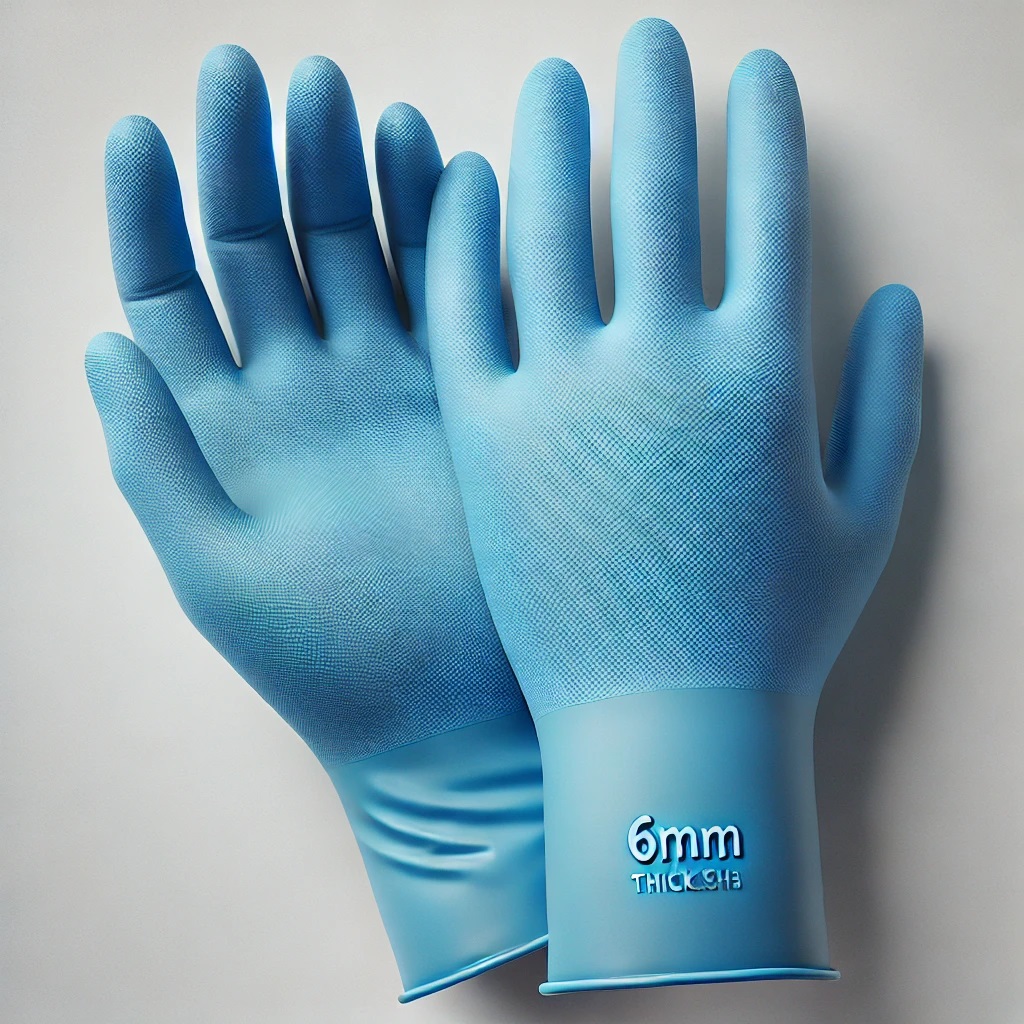
Introduction
In the world of protective hand gear, nitrile and latex gloves stand out as two of the most commonly used types. Both offer unique advantages and disadvantages depending on the application. This article delves into the specifics of nitrile 8mm gloves compared to latex gloves, helping you make an informed decision for your needs.
Comparison of Nitrile 8mm Gloves and Latex Gloves
Understanding Nitrile 8mm Gloves
Material Composition Nitrile gloves are made from synthetic rubber, offering an alternative to natural latex. The 8mm thickness refers to the glove’s thickness, which impacts its durability and protection levels.
Key Features of Nitrile Gloves
- Allergy-Free: Nitrile gloves are latex-free, making them suitable for individuals with latex allergies.
- Chemical Resistance: They provide excellent protection against a wide range of chemicals, oils, and solvents.
- Durability: The 8mm thickness enhances their resistance to punctures and tears.
- Sensitivity: Despite their thickness, nitrile gloves offer good tactile sensitivity.
Understanding Latex Gloves
Material Composition Latex gloves are made from natural rubber, derived from rubber tree sap. They are known for their flexibility and comfort.
Key Features of Latex Gloves
- Elasticity: Latex gloves are highly elastic, providing a snug fit and excellent comfort.
- Touch Sensitivity: They offer superior tactile sensitivity, making them ideal for tasks requiring precision.
- Biodegradability: Being made from natural rubber, latex gloves are more environmentally friendly.
Durability and Protection
Nitrile Gloves
Puncture and Tear Resistance Nitrile gloves, especially at 8mm thickness, offer superior resistance to punctures and tears compared to latex gloves, making them ideal for heavy-duty tasks.
Chemical Resistance Nitrile gloves provide robust protection against various chemicals, including oils, greases, and solvents, making them suitable for industrial and medical applications.
Latex Gloves
Puncture and Tear Resistance While latex gloves are durable, they are more prone to punctures and tears compared to thick nitrile gloves, particularly when handling sharp objects.
Chemical Resistance Latex gloves offer good protection against water-based chemicals but are less effective against oils and solvents.
Comfort and Fit
Nitrile Gloves
Fit and Flexibility Nitrile gloves are generally less elastic than latex gloves, but advancements in manufacturing have improved their fit and flexibility.
Comfort The 8mm thickness can make nitrile gloves feel slightly stiffer, but they still provide adequate comfort for prolonged use.
Latex Gloves
Fit and Flexibility Latex gloves are known for their exceptional elasticity, providing a snug and comfortable fit that conforms closely to the hand’s contours.
Comfort Due to their natural elasticity and thinner material, latex gloves offer superior comfort, especially for extended wear.
Applications and Uses
Nitrile Gloves
Industrial Use Nitrile gloves’ chemical resistance and durability make them ideal for industrial applications, including automotive, manufacturing, and chemical handling.
Medical Use They are also widely used in medical settings due to their puncture resistance and protection against infectious agents.
Latex Gloves
Medical Use Latex gloves are commonly used in medical and dental fields due to their superior touch sensitivity and comfort.
Food Handling Their flexibility and ease of movement make them suitable for food handling and preparation tasks.
Allergy Considerations
Nitrile Gloves
Nitrile gloves are latex-free, eliminating the risk of latex allergies, making them a safer choice for individuals with sensitivities.
Latex Gloves
Latex gloves can cause allergic reactions in some individuals, ranging from mild irritation to severe anaphylaxis.
Environmental Impact
Nitrile Gloves
Nitrile gloves are less biodegradable compared to latex gloves, posing a higher environmental impact.
Latex Gloves
Being made from natural rubber, latex gloves are more biodegradable and environmentally friendly.
Cost Comparison
Nitrile Gloves
Generally, nitrile gloves, especially thicker ones, are more expensive than latex gloves due to their superior durability and chemical resistance.
Latex Gloves
Latex gloves are typically cheaper, making them a cost-effective choice for applications where allergy risks are minimal.
Conclusion
In summary, nitrile 8mm gloves and latex gloves each have their strengths and are suited for different applications. Nitrile gloves offer greater durability and chemical resistance, making them ideal for industrial and heavy-duty use. Latex gloves provide superior comfort and tactile sensitivity, suitable for medical and delicate tasks. Understanding these differences can help you choose the right type of glove for your specific needs.
FAQs
What are the main differences between nitrile and latex gloves? Nitrile gloves are synthetic and offer superior chemical resistance and durability, while latex gloves are natural, providing better elasticity and comfort.
Are nitrile gloves more expensive than latex gloves? Yes, nitrile gloves are generally more expensive due to their enhanced durability and chemical resistance.
Can nitrile gloves cause allergies? No, nitrile gloves are latex-free and do not cause latex allergies.
Which type of glove is more environmentally friendly? Latex gloves are more biodegradable and environmentally friendly compared to nitrile gloves.
Are latex gloves suitable for handling chemicals? Latex gloves offer good protection against water-based chemicals but are less effective against oils and solvents.
Which glove type provides better tactile sensitivity? Latex gloves provide superior tactile sensitivity, making them ideal for tasks requiring precision.
